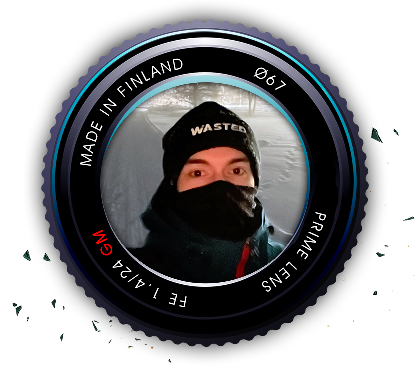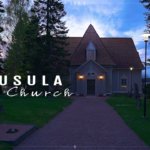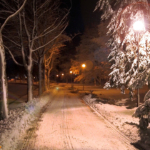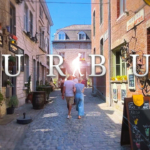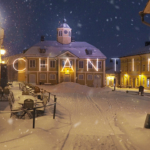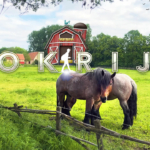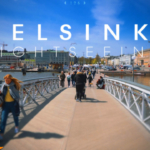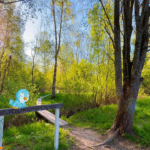Historic Walk in the Birthplace of Finnish Literature Pernå (Pernaja), Finland
4K UHD
Welcome to another beautiful radiant Sunday walk.
I want to take you back in time to a very important part in the history of Finland.
The Reformation, the transition from Catholicism to Protestant religion, and the birth of Finnish literature.
I will tell you how this very small but beautiful town plays a part in it.
In front of us is the neo-Gothic Bell Tower of Pernå, built in 1853.
It belongs to the Pernå Church which is a little to the left of here.
A little over 500 years ago, a young boy named Mikael was born here in Pernå (Pernaja).
He was named after the patron saint of Pernå’s church, St. Michael.
Walking in the same steps as he used to do.
It was clear from an early age that he had talent.
His first teacher, the pastor of Pernå, persuaded his parents to send him to a Latin school in Vyborg (now Russia).
At the time, Pernå was mainly a Swedish-speaking district, but the language he used in his works indicated that he was a native Finnish speaker.
However, he mastered both languages like a native and was possibly a bilingual child.
He chose the surname Agricola at the beginning of his studies in Vyborg, which means ‘farmer’ (agriculture).
Surnames based on the father’s status and profession were common for first generation scholars.
It was at this school he first came into contact with the Reformation.
At the age of 18, Mikael traveled to Turku (Åbo), then the center of Finland within the Swedish Empire.
By the time he was 26 (1536) the Bishop of Turku sent Mikael to study in Wittenberg, Germany.
He focused on the Greek language, the original language of the New Testament.
In 1537, together with Martin Teit (another scholar from Pernå) started translating the New Testament into Finnish.
At that time, there was no written form of Finnish, so he started developing it.
He made his first book, Abckirja (ABC book) first printed in 1543.
Mikael’s most prominent book is the first Finnish translation of the New Testament.
It was completed in 1548 and contains 718 pages and illustrations.
On his return to Turku in 1539 he became the Rector of Turku (Cathedral) school.
Swedish King Gustav Vasa consecrated Mikael as the ordinarius of Turku parish.
Becoming the first Lutheran bishop for all Finland.
On 9 April 1557 he fell ill and died on a diplomatic mission to Russia.
The original bronze statue of Mikael Agricola was lost in the last days of the Winter War in 1940.
Today there are 4 replicas that can be found in Turku (1910), Lahti (1953), Pernå (1959) and Vyborg (2009).
In front of us stands the beautiful medieval gray stone church of Pernå.
Dedicated to St. Michael (archangel) and St. Erik (12th century Swedish king).
It was built between 1410 and 1440 by the hands of the ‘Master of Pernå’.
A German builder who also designed the medieval churches in Porvoo, Sipoo, Pyhtää, Vantaa and Hamina.
As early as the 14th century, a wooden church stood on roughly the same site.
Used by the parish of Pernå, formed in the first half of the 14th century by the Bishop of Turku.
The interior is decorated in several different eras.
The baptismal font is from the 14th century, a 15th century crucifix, the pulpit and altar are from the 1650s.
The murals date from the 1440s and the current stained glass windows were designed in 1939.
The statue of Mikael Agricola can be seen in the cemetery.
However, he is not buried here, but presumably in the old cathedral of Vyborg (now Russia), where the tomb was probably destroyed in the 18th century.
Thank you for joining.
Enjoy the rest of your walk and hopefully see you in the next scene.
Together we learn, explore and walk through the scenes.
Scott Buckley
Helios
https://scottbuckley.com.au
Attribution 4.0 International (CC BY 4.0)
